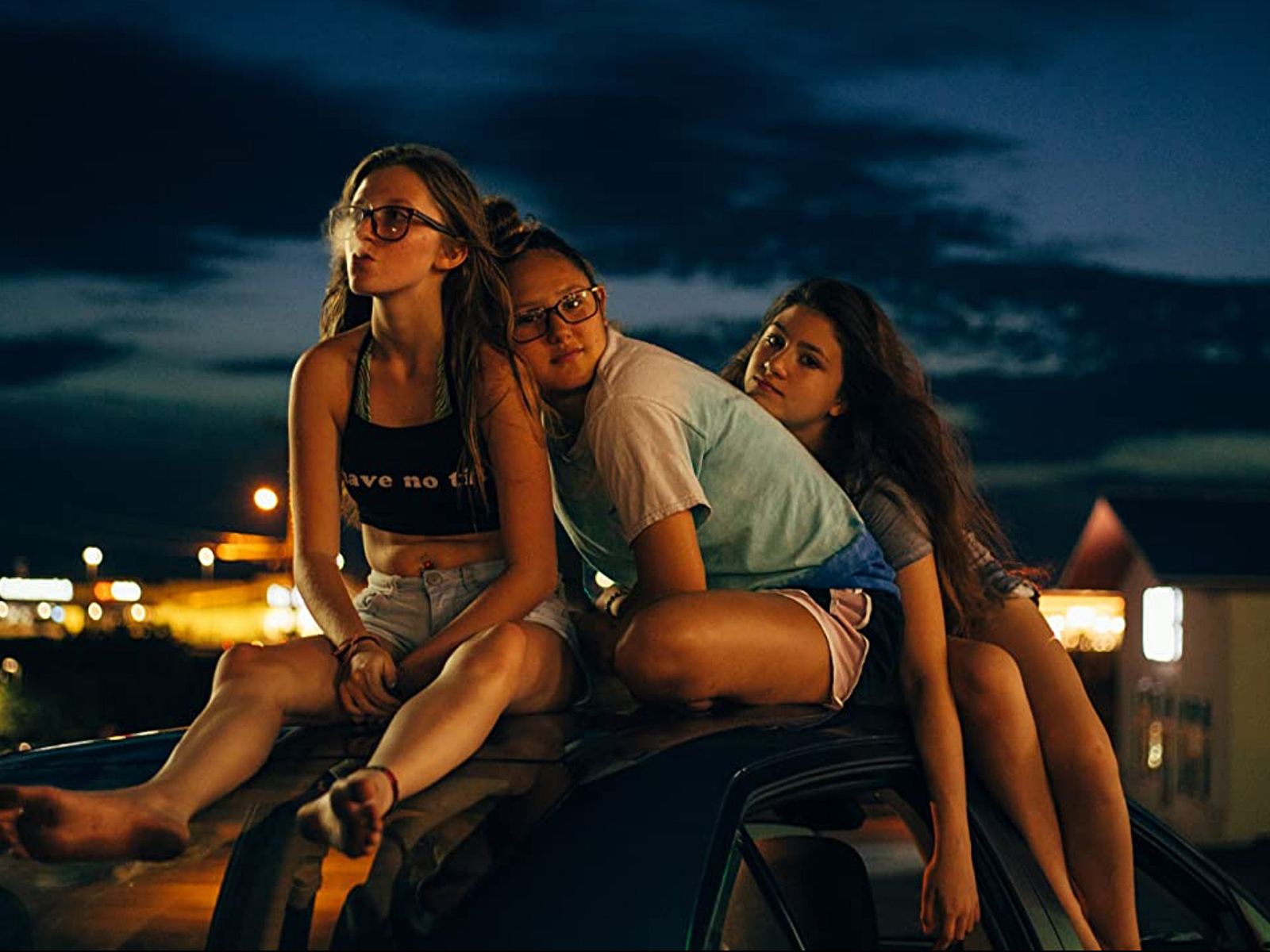
- Festivals
Sundance 2021: Cusp
With the mainstreaming of nonfiction narratives and the expansion in streaming platform options, the last two decades or so have seen an explosion in documentaries chronicling precocious overachievers, from Jeffrey Blitz’s Oscar-nominated Spellbound all the way up to and including several new offerings at this year’s Sundance Film Festival. Cusp, on the other hand, co-directed by Parker Hill and Isabel Bethencourt, is an arresting work of underclass portraiture that exists on the opposite end of this adolescent spectrum, centering not on honor roll students but rather on kids with a certain amount of trauma and an even greater amount of uncertainty about what their futures could or should hold.
Winner of Sundance’s Special Jury Emerging Filmmaker Award, Cusp unfolds in a small, dusty Texas community that abuts a military base. But its setting is so nondescript that it could be a stand-in for any and every small town in the United States which has seen its population shrink as socioeconomic opportunities dry up and the most ambitious or enterprising young people move away to bigger cities. Taking place over the course of one half-year, the movie focuses predominantly on three girls, Brittney, Aaloni and Autumn, and their various romantic partners who sometimes come and go, leaving the teenagers grasping for emotional equilibrium and self-confidence.
Cusp opens with a bit of voiceover narration (“I don’t know how to describe me yet — I’m not an adult yet, but I’m not a kid anymore”) that indicates its interest in hinge-point adolescence when ambivalence blocks out any sensible view of a future that doesn’t involve day-to-day existence and the immediate gratifications that exist therein. Autumn lives with her single father and is a bit of an introvert with self-admitted trust issues. Brittney has a turbulent home life, as well, and regrets losing her virginity. Aaloni, meanwhile, has an open relationship with her mother, and fiercely protective instincts when it comes to her friends and a younger sister that belie some of her own decision-making.
Cusp’s interests are social and hormonal much more than scholastic. Notably, viewers don’t ever see the girls in school, which begs the chicken-or-egg question: did the chosen subjects beget this focus, or were their lives curated in such a manner as to exclude this aspect or even any significant discussions of it? Regardless, like Elizabeth Mims and Jason Tippet’s Only the Young (2012), Hill and Bethencourt’s movie is a compelling snapshot of teenage wasteland, of bored kids finding ways to occupy themselves in a place without the benefit of the much-structured activity. For the girls here, all 15 or 16, this mostly means simply heading to McDonald’s, gathering at a friend’s house to drink beers and smoke, or watching their boyfriends and romantic pursuers play videogames or shoot off guns in scraggly fields.
If that sounds boring, it isn’t, because Cusp honors the contradictory impulses and behaviors of its subjects. Among the sadly noteworthy details is that this coming-of-age tale possesses not one iota of “coming-of-rage.” As they open up and share personal stories of abuse, none of the girls are particularly animated or filled with outwardly manifested anger about the molestation, assault, or sexual coercion suffered by themselves or their friends. Rather, they accept these incidents, and controlling behavior or other manifestations of toxic masculinity from the men and boys in their lives, with a shrugging nonchalance — that this is the fate of their gender, at least at this end of the pool.
The magic of Hill and Bethencourt’s movie, whose potency slowly accumulates, as if a cup filled by drips, lies in the way in which seemingly slight or throwaway scenes take on greater urgency and sadness over the course of its tight, 83-minute running time, as a viewer comes to root for the escape and self-actualization of these girls. Hill’s editing is intuitive and evocative, and the movie’s natural inclination toward subjective empathy (one character’s withholding father, framed as a bully if not an outright abuser, doesn’t appear onscreen, and when other characters hurt any of the girls they disappear from the narrative) helps to create a strong sense of emotional investment. Cusp is also gorgeously shot in a vérité style, it’s worth noting, which helps serve as a counterpoint to some of the dark memories and experiences its subjects share. It’s not at all a stretch to see the quick cutaway of a broken skateboard as a stand-in for broken teenage dreams.
The overall result is a poignant, nonjudgmental Polaroid of limbo-state puberty, against the backdrop of a diseased societal framework. Impatient viewers may clamor for more dynamism or catharsis, but the storytelling instincts on display here are superb and humanistic. Hill and Bethencourt’s work leaves a melancholic mark, but also points toward a broader conversation about what type of duty men, both young and old, have in helping to build a more equitable world.